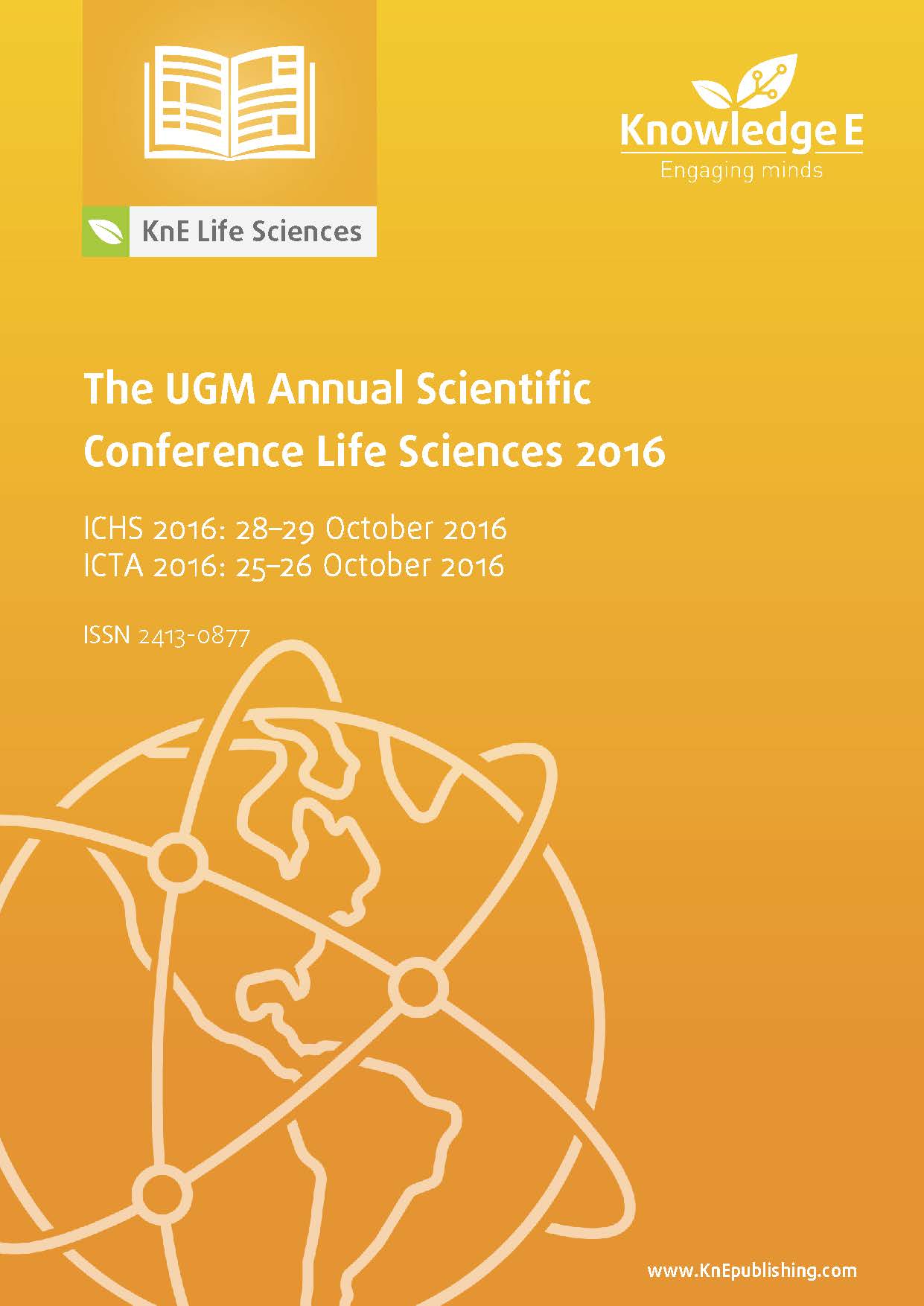Animal Welfare Assessment System for Sustainable Cattle Production in Indonesia
DOI:
https://doi.org/10.18502/kls.v4i11.3865Abstract
The demand of a sustainable system to evaluate animal welfare in farming practices are now increasing. Indonesia as a developing country still have a problem in maintaining their animal welfare assessment system especially in cattle production. The lack of information and regulation about animal welfare in cattle farming practices affects the deprived animal welfare practices in the field. Poor animal welfare resulting in low
efficacy of animal production. The quality of animal products is now judged in relation to the ethics of production including impact on the animal’s welfare, direct features, and consequences for consumers. In this paper, we suggest the concept of the animal welfare assessment system for sustainable cattle production in Indonesia which are based on protocols, human resources, and government. These three main elements
in the animal welfare assessment system will be integrated to build a sustainable cattle production through better animal welfare practices. Enhanced animal welfare practice in cattle production chain will follow the sustainable production. We expect the implementation of this assessment system will give more value to the Indonesian cattle products in order to compete with international beef and dairy products.
Keywords: Animal welfare, Cattle production, Assessment, System, Sustainable
References
Sørensen JT, Sandøe P, Halberg N. Animal welfare as one among several values to be considered at farm level: The idea of an ethical account for livestock farming. Acta Agriculturae Scandinavica, Section A—Animal Science 2011;51:S30: 11–16 https://www.researchgate.net/publication/249047640_Animal_Welfare_as_One_among_Several _Values_to_be_Considered_at_Farm_Level_The_Idea_of_an_Ethical_Account_for_Livestock _Farming
Roe E, Buller H. Marketing farm animal welfare factsheet. Wageningen; 2008 https://www.researchgate.net/publication/ 313209010_Marketing_farm_animal_welfare_factsheet
Sejian V, Lakritz J, Ezeji T, Lal R. Assesment methods and indicators of animal welfare. Asian Journal of Animal and Veterinary Advances 2011; 6(4):301–315 https://www.researchgate.net/publication/ 259865864_Assessment_Methods_and_Indicators_of_Animal_Welfare
Etim NN, Offiong EEA, Eyoh GD, Udo MD. Stress and animal welfare: An uneasy relationship. European Journal of Advanced Research in Biological and Life Sciences 2013; 1(1):9–16 https://pdfs.semanticscholar.org/df42/
e3db5acbe5e112f1e424be471009d106002.pdf
Sorensen JT, Hindhede J, Rousing T, Fossing C. Assessing animal welfare in a dairy cattle herd with an automatic milking system. Proceedings of The First North American Conference on Robotic Milking. 2002; (VI)54–59 https://pdfs. semanticscholar.org/b717/1e492e950ce131f1a46b7aacf86fa5d9bf39.pdf
Gillespie J, Flanders F. Modern livestock and poultry production (8th edition). Cengage Learning, Australia; 2009. p.21 https://books.google.co.id/books/about/ Modern_Livestock_Poultry_Production.html id=7Z9o_vGPP4cC&redir_esc=y
Manteca X, Velarde A, Jones B. Animal welfare components. In: Welfare of production animals: Assessment and management of risks. Smulders F, Algers B, (Eds). Wageningen Academic Publishers, Netherlands; 2011. p. 61–77 https://doi.org/10. 3920/978-90-8686-690-8
Fraser D. Understanding animal welfare. Acta Veterinaria Scandinavica 2008; 50(S1):S1 https://www.ncbi.nlm.nih.gov/pmc/articles/PMC4235121/
Veissier I, Butterworth A, Bock B, Roe E. European approaches to ensure good animal welfare. Applied Animal Behaviour Science 2008; 113(4):279–297 https://doi.org/10. 1016/j.applanim.2008.01.008
Velarde A, Dalmau A. Animal welfare assessment at slaughter in Europe: Moving from inputs to outputs. Meat Science 2012; 92(3):244–251 https://www.researchgate.net/publication/ 224887685_Animal_welfare_assessment_at_slaughter_in_Europe_Moving_from_inputs_to_outputs
del Campo M, Brito G, Montossi F, Lima SD, Julian SR. Animal welfare and meat quality: The perspective of Uruguay, a —small exporter country. Meat Science 2014; 98(3):470–476 (https://www.semanticscholar.org/
paper/Animal-welfare-and-meat-quality%3A-the-perspective-of-Campo-Brito/ e4539a6580ed9a6bac16fbfe6a8507685ce8393f)
Grandin T. Animal welfare and society concerns finding the missing link. Meat Science 2014; 98(3):461–469 https://www.semanticscholar. org/paper/Animal-welfare-and-society-concerns-finding-the-Grandin/
f4a466cc86132fadfcd3f6176252b6a2b8d208
del Campo M. Bienestar animal: ¿un tema de moda? [Animal welfare: A fashionable subject?]. Revista INIA Uruguay 2006; 9:7–12 [in Spain] http://www.produccionanimal.com.ar/etologia_y_bienestar/bienestar_en_general/01-inia_re_9.pdf
Mason GJ, Burn CC. Behavioural restriction. In: Animal welfare. Appleby MC, Hughes BO, Mench JA, (Eds). Cambridge University Press, Cambridge; 2011. p. 98–105 https: //books.google.co.nz/books?isbn=1845936590
Petherick JC. Animal welfare issues associated with extensive livestock production: The northern Australian beef cattle industry. Applied Animal Behaviour Science 2005; 92:211–234 https://www.sciencedirect.com/science/article/pii/ S0168159105001413
Ljungberg D, Gebresenbet G, Aradom S. Logistics chain of anima transport and abattoir operations. Biosystems Engineering 2006; 96(2):1–11 https://www. sciencedirect.com/science/article/pii/S1537511006003746
Southern KJ, Rasekh JG, Hemphill, Thaler AM. Conditions of transfer and quality of food. Scientific and Technical Review of the Office International des Epizooties 2006; 25(2):675–684 https://pdfs.semanticscholar.org/9538/ 60b45a6ac37437bd86a7c73ab679d0ab5de3.pdf
Botreau R, Bonde M, Butterworth A, Perny P, Bracke MBM, Capdeville J, Veissier I. Aggregation of measures to produce an overall assessment of animal welfare: Part 1 — A review of existing methods. Animal 2007; 1:1179–1187 https://www.ncbi.nlm.nih. gov/pubmed/22444862
Miele M, Lever J. Civilizing the market for welfare friendly products in Europe? The techno-ethics of the welfare quality assessment. Geoforum 2013; 48:63– 72 https://www.infona.pl/resource/bwmeta1.element.elsevier-f77b1225-b5f2-3146- ab6b-b3bd90535e7b
European Commission. Communication from the commission to the European parliament, the council, and the European economic and social committee on the European Union strategy for the protection and welfare of animals 2012–2015. Released February 15
Blokhuis H, Keeling L, Gavinelli A, Serratosa J. Animal welfare’s impact on the food chain. Trends in Food Science and Technology 2008; 19(S1):75–83 https://www. sciencedirect.com/science/article/pii/S0924224408002379
Ingenbleek PTM, Immink VM, Spoolder HAM, Bokma MH, Keeling LJ. EU animal welfare policy: Developing a comprehensive policy framework. Food Policy 2012; 37(6):690–699 https://www.sciencedirect.com/science/article/pii/ S0306919212000759
Hatanaka M, Buschm L. Third-party certification in the global agrifood system: An objective or socially mediated governance mechanism?. Sociologia Ruralis 2008; 48(1):73–91 https://onlinelibrary.wiley.com/doi/abs/10.1111/j.1467-9523.2008.00453.x
FAO. Capacity building to implement good animal welfare practices. Report of the FAO Expert Meeting, Rome; 2008. http://www.fao.org/ag/againfo/resources/ documents/AW/AW_Exp-meeting_EN.pdf
Bock BB, van Huik MM. Animal welfare: The attitudes and behaviour of European pig farmers. British Food Journal 2007; 109(11):931–944 https://www.emeraldinsight. com/doi/abs/10.1108/00070700710835732
Harper G, Henson S. Consumer concerns about animal welfare and the impact on food choice. Final Report. Centre for Food Economics Research, Reading, UK; 2001. https://pdfs.semanticscholar.org/6b59/
ef98a02e41010592e7853bbeb015cb6.pdf
Miele M. The taste of happiness: Free-range chickens. Environment and Planning A 2011; 43(9):2076–2090 http://journals.sagepub.com/doi/10.1068/a43257

